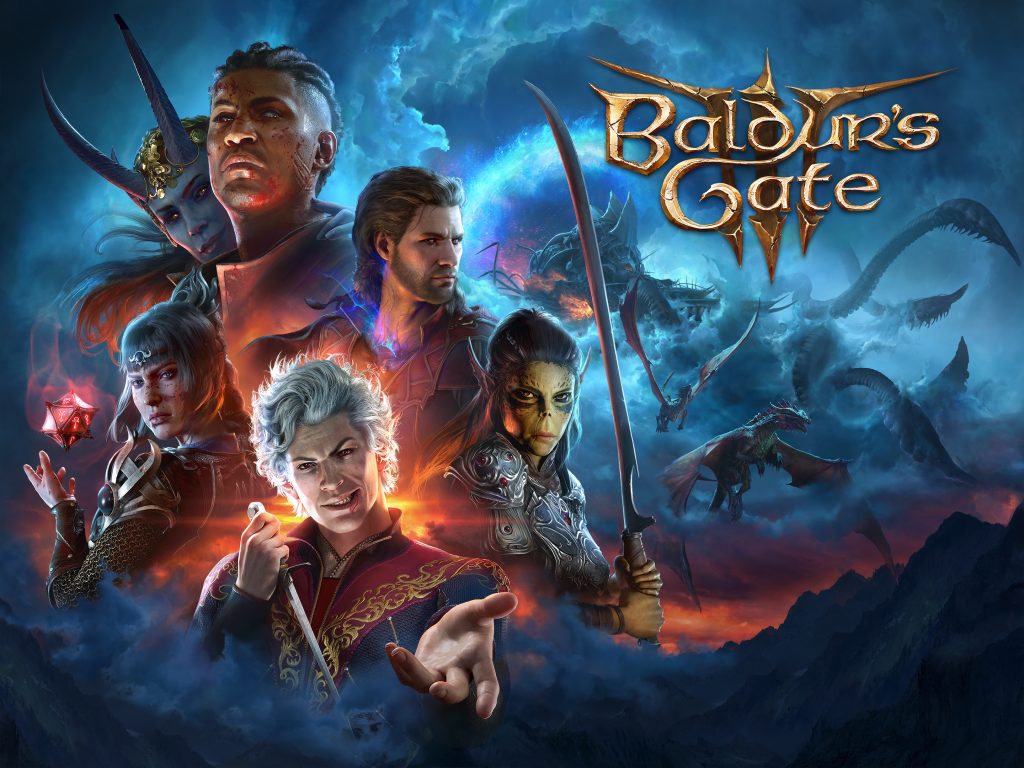Is this the best computer role-playing game ever? I certainly haven’t seen a better one, and believe me, I’ve played a few. Every part of it is polished, honed, fine-tuned and perfected, so the whole game shines with a brightness yet unseen in any team-based swords-and-sorcery opus.
Based on the fifth edition of Advanced Dungeons & Dragons’ rulebook, the game takes place in the lands of Forgotten Realms, the setting of several other CRPGs such as Eye of the Beholder, Neverwinter Nights, Pool of Radiance and, of course, the first two Baldur’s Gate games. You can play it on your own, controlling a party of four, or in true AD&D style, team up with others for co-operative multiplayer play.
Even before you start, there are choices to make. Do you use the game’s pre-rolled characters, with ready-made attributes and backstories, or start from scratch and make your own? Opt for the latter and you get to choose from 12 character classes such as Wizard, Barbarian, Fighter and Rogue, with 46 sub-classes to choose from. There’s also 11 races with 31 sub-races. Plenty of variety, then.
Amazing action
Whether you’re exploring the wilderness, battling your way through Moonrise Towers or advancing through the city of Baldur’s Gate for the final confrontation with the Elder Brain, the scenery is beautifully realised. The game features rich, organic environments that give a real feeling of being there, as do the 174+ hours of excellent cinematic cut scenes. That’s over twice the length of all eight seasons of Game of Thrones.

The voice acting is also beyond reproach. A total of 248 actors were used, and they also did the motion capture for the characters they voiced, making conversations seem more natural and authentic. The dialogue includes over two million words, which is more than three times as many as are in all three Lord of the Ring books combined.
The game’s environments boast an excellent degree of interaction and flexibility. Almost all the scenery is interactive, and you’re rarely prevented from doing something that should logically be possible, like chopping down a door or climbing over a small obstruction. Actions have consequences, though – think before you act.
Sensational swordplay
Combat is more closely linked to AD&D than the first two games. It’s now turn-based. When it all kicks off you roll for initiative, with players and enemies acting in the order indicated by this roll. Take it in turns to move, attack or cast spells, and when you’ve run out of movement or action points, click the ‘End Turn’ button. Play then moves onto the next character (friendly or enemy). While brute force is certainly an option, a wise player looks to gain an advantage, such as taking the high ground, pushing an enemy over a cliff or casting a well timed defensive spell. Talking of spells, there are over 600 in the game. It will take you a while to see them all.

As you progress through the impeccable storyline you earn money to buy better armour and equipment, and gain experience to make you better at your chosen profession. It’s a good job too. A criticism aimed at the original two Baldur’s Gate games was that they were brutally unforgiving at the start, killing you off far too quickly. Unfortunately this is carried over into the third game. Persevere, though, and make regular use of the quick-save feature. If you don’t give up, there’s well over 100 hours of playing time on offer. Branching storylines, exciting side quests and different endings add replay value too.
Baldur’s Gate 3 raises the bar for CRPGs to unprecedented levels. If you’re interested in this type of game, you really shouldn’t miss it.


